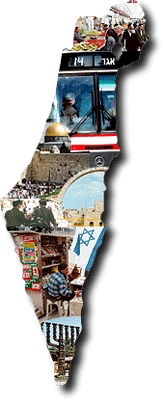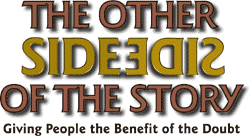Light Lines - Behar
Parshat Behar
15 Iyar 5760 / 20 May 2000
Ohr Somayach Home Page
WHAT IS LAG B'OMER?
One of the lesser known Jewish holidays, Lag B'Omer hasn't gotten quite the good press that say, Tu B'Shvat has. Perhaps the current sociological atmosphere of nature and ecological appreciation lends itself more towards a tree-celebrating holiday like Tu B'Shvat than a tree-burning one like Lag B'Omer. Still, I think we should try to learn a little more about all the holidays, and besides, what could be wrong with a Jewish holiday that includes bonfires and cookouts?
If we look in the Torah portion of Emor we will find that we are commanded to count forty-nine days starting from the second day of Passover. Each evening we recite a special blessing and quite literally, count the day. After the forty-nine days have passed, on the fiftieth day, we celebrate the Festival of Shavuot, that commemorates the Giving of the Torah. This 49 day period that takes us from Passover to Shavuot is called "Counting the Omer." The Omer itself is a special offering of barley which was brought on the altar in the Holy Temple on the day the count starts, the second day of Passover.
"Lag B'Omer," literally the "Lag" of the Omer, is the thirty-third day of the forty-nine. The word "Lag" is an acronym which means 33, comprised of the letters "lamud" and "gimmel," corresponding to the numerical values of "30" and "3."
The whole forty-nine days of Counting the Omer is a time of heightened spiritual sensitivity and growth, just as it originally was for our ancestors. The Jewish People left Egypt at Passover, at the spiritual nadir of their long history, steeped in the idol worshipping practices of the Egyptians. Within these forty-nine days, through copious Divine assistance, they grew to become a People worthy of receiving the Torah directly from G-d on Mount Sinai. In evey generation we can take advantage of special Divine asssistance during this period to grow spiritually and improve ourselves.
However, the greater the potential there is for growth and building, the greater the potential there is for destruction. Consequently, in eras when the Jewish People have not lived up to their potential, the Omer period has become one of tragedy.
In the time of Rabbi Akiva, a prominent figure in the Talmud who was the greatest Torah Sage of his generation, the Omer period witnessed the deaths of twenty-four thousand of his students in an epidemic. The underlying spiritual cause of the epidemic was the students' lack of proper respect for each other. At a time when there is the potential for tremendous spiritual growth, spiritual negligence is a far more grievous sin, and thus the punishment that befell them during the Omer was so severe. As a result of the tragedy, the Omer period has become one of semi-mourning in which we don't hold weddings or festivities, nor do we shave or get haircuts.
Rabbi Akiva's disciples died for thirty-three days, and then the epidemic subsided. Thus the thirty-third day of the forty-nine, Lag B'Omer, has become a joyous day of celebration.
After his students died, Rabbi Akiva 'started over' and began teaching other students. One of his foremost new students was Rabbi Shimon bar Yochai, the author of the Zohar. The Zohar, which means "The Shining Light," is one of the fundamental works of the hidden, mystical teachings of the Torah.
Which brings us back to the bonfires. When Rabbi Shimon eventually died, it was on Lag B'Omer. In honor of the great ray of light that he brought to the world, we light bonfires and sing songs in his honor every year on Lag B'omer, the anniversary of his death. So whether or not you indulge in non-vegetarian hotdogs or preservative-laden, synthetic marshmallows, you can still light a bonfire in recognition and celebration of the glory of Torah study and the brilliant light of Torah wisdom kindled by Rabbi Akiva's student Rabbi Shimon bar Yochai.
|
Ohr Somayach Home Page |
 Selections from classical Torah sources which express the special relationship between the People of Israel and Eretz Yisrael THE CARMEL PLAN Rusty iron rails driven into the ground in the Dania quarter of Haifa are the only reminders left of what was known as the "Carmel Plan." These rails were supposed to have served as barriers against the tanks of Rommel's Afrika Korps quickly approaching Palestine in 1942. The plan was to turn Mount Carmel into a Masada-like mountain fortress from which the Jews of Palestine would fight to the death if the German forces broke through the last line of British resistance at El Alameen. The Jewish community in Palestine forgot its differences with the British over the White Paper and joined the allied war effort (in sharp contrast to the flirtation of Haj Amin Husseini, the Grand Mufti of Jerusalem, with Hitler and Mussolini). However, the British refused to supply their Jewish allies with arms to defend themselves because they were afraid that they might not be returned. Ultimately, General Montgomery's forces turned back Rommel's army, and the Carmel Plan, with G-d's help, was never put into effect. |
|
Ohr Somayach Home Page |
When the "candy police" blow the whistle, it's ...
Toot Sweet
When my firsborn son was a toddler I used to take him to synagogue. On several occasions I saw that he was given a piece of candy by one of those in attendance. I asked this person not to give my son candy but this continued. So I spoke to him again; he denied giving my son a sweet; and I replied that I saw this myself. Then he explained that my son came to him with a sweet and all he did was remove the wrapping paper so my son could eat it! It was another person in the synagogue who was giving out the treats!
This was quite a lesson to me about not jumping to conclusions, for though I thought I saw everything with my own eyes, my immediate conclusion was wrong.
Moral of the story: When a relationship sours, sugar-coat it by judging the other person favorably.
|
Ohr Somayach Home Page |
Memorial Flames
Baruch Felson wrote:
I understand why a person leads the congregation in prayer and studies Torah on his parent's yahrzeit (anniversary of death). This brings merit to the deceased by his or her descendant's continuing to do mitzvot in this world. My question is how, and if, lighting a candle accomplishes this goal? Thank you.
Dear Baruch,
The soul, or neshamah, of the departed derives joy from the kindling of lights. This enjoyment brings the neshamah to a state of spiritual expansion. The neshamah itself is a portion of light drawn from the light of the intellect. In Proverbs, King Solomon refers to this when he writes, "Man's soul is G-d's candle."
Therefore every year on the anniversary of the passing of one's parent, or other relatives, one kindles a light, called the yahrzeit candle; for on this day, the neshamah has permission to travel about in the world. It comes and sees the light burning for it, and receives spiritual satisfaction from this.
Some authorities write that it's best to light the yartzeit candle in the synagogue. Perhaps this brings merit to the deceased by enhancing the honor and ambiance of the synagogue.
Light Insight | Love of the Land | The Other Side of the Story | Response Line Ohr Somayach Home Page |
Produced by the Office of Communications
Editor: Raphael Scott Leban
Production: Eliezer Shapiro
HTML Production: Michael Treblow
© 2000 Ohr Somayach International - All rights reserved. This publication may be distributed to another person intact without prior permission. We also encourage you to include this material in other publications, such as synagogue newsletters. However, we ask that you contact us beforehand for permission, and then send us a sample issue.
This publication is available via E-Mail
Ohr Somayach Institutions is an international network of Yeshivot and outreach centers, with branches in North America, Europe, South Africa and South America. The Central Campus in Jerusalem provides a full range of educational services for over 685 full-time students.









